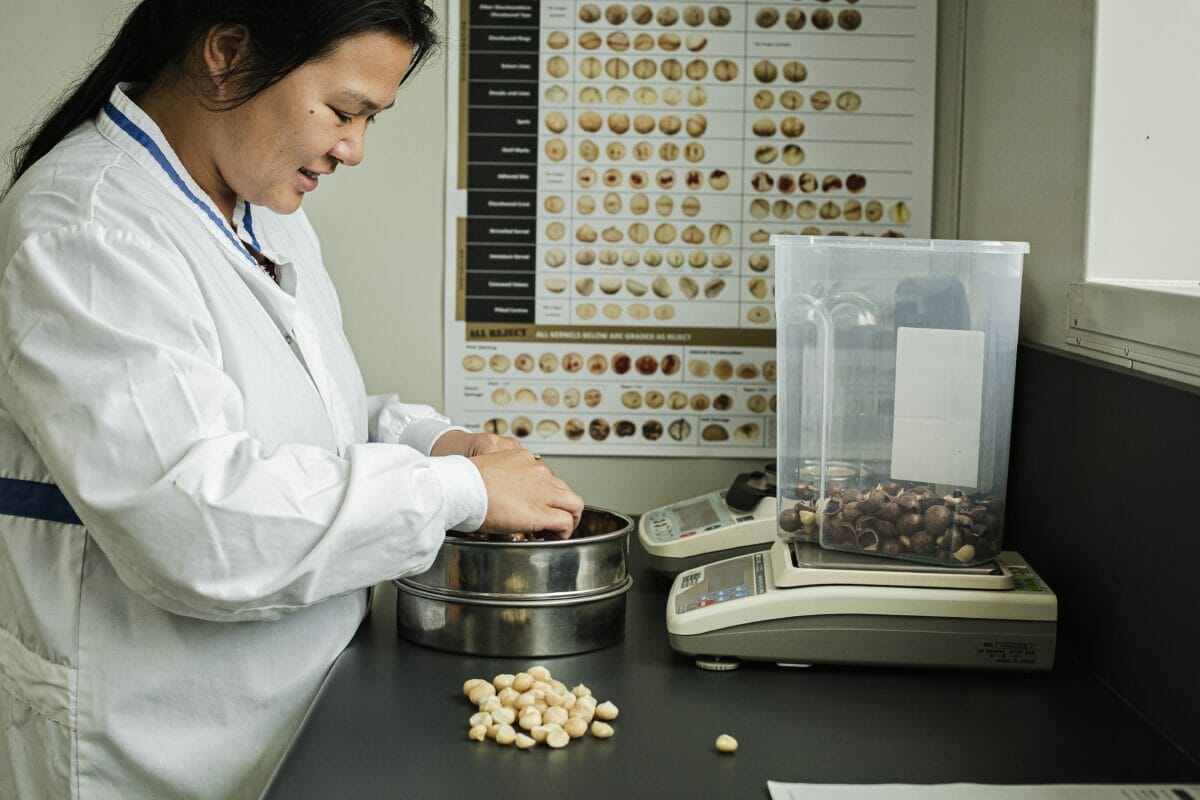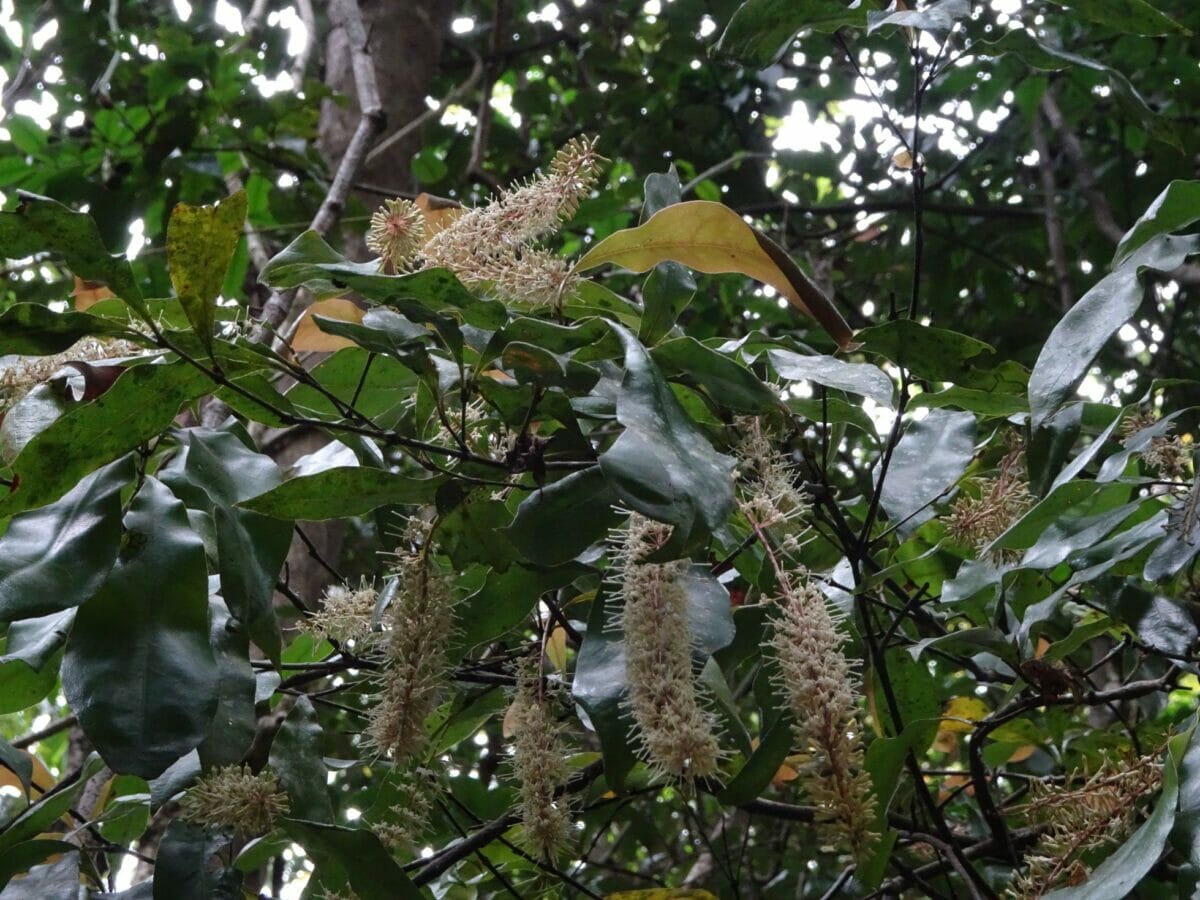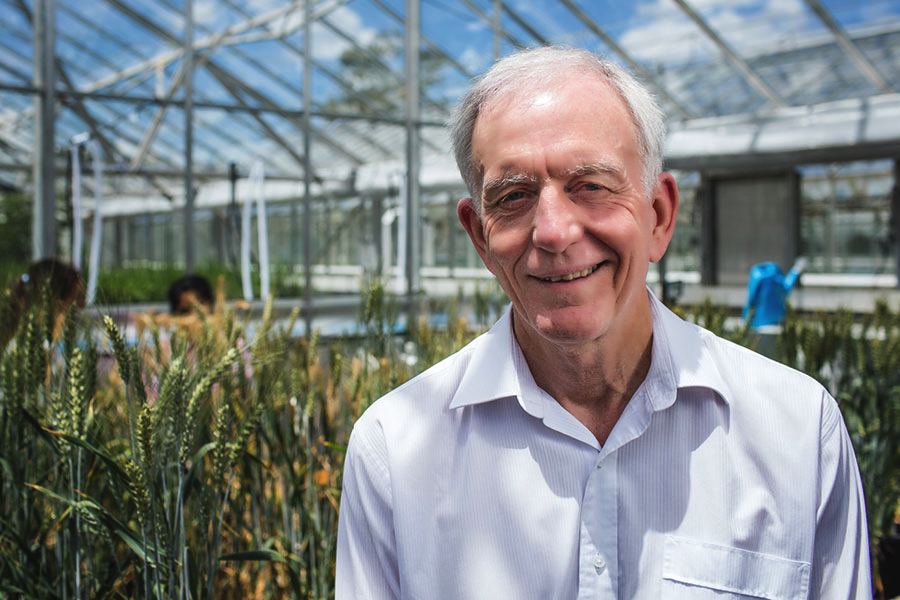In an effort to ensure the future of the world’s most expensive nut, scientists are working to preserve the genetic diversity of macadamia trees in their native land.

Ian McConachie has spent much of the past 50 years tramping through the rainforest on the hunt for wild macadamia trees. “Finding a wild macadamia is akin to the thrill of finding gold,” he says.
Yet it’s not the sweet buttery nuts that command up to $25 per pound for which he’s searching but rather the living gene bank that exists within the last remaining wild trees.
Macadamias evolved in the cool, lush rainforests on Australia’s east coast around 50 million years ago and were once ubiquitous there. But McConachie estimates that around 90 percent of wild macadamia trees have been lost since European settlement, while all four species are classified as endangered due to scattered distribution, habitat loss and other impacts.
That hasn’t stopped macadamia nuts from becoming Australia’s largest native export, with around 50,000 tonnes produced each year, according to the Australian Macadamia Society, an industry body representing more than 700 growers.
Globally, the macadamia industry has also undergone rapid expansion in the last 50 years, with Australia, South Africa, Kenya and the United States being the largest producers. Crops are also cultivated in China, South East Asia, South America, Malawi and New Zealand.
But, as with many commercial crops, the history of the nut’s domestication means that crops under cultivation largely lack genetic diversity.

A Macadamia jansenii tree flowers. Photo courtesy of the University of Queensland.
According to research published in Frontiers in Plant Science in 2019, the macadamia variety on which the global industry relies may have originated from a single tree or, at most, a handful of trees, taken from Queensland to Hawaii, where the crop was first grown commercially, in the 19th century.
“So, probably 60 percent of macadamia trees planted in Australia and 80 percent planted in the rest of the world have a very limited genetic base,” McConachie says.
A lack of genetic variability leaves plants vulnerable to emerging pests, disease, natural disasters such as Australia’s “Black Summer” 2019-2020 bushfires and, ultimately, climate change.
[RELATED: The Great American Chestnut Tree Revival]
For that reason, the Macadamia Conservation Trust, founded by McConachie in 2007, has recently launched a project with Macadamias Australia, a major family-run producer, to create an arboretum of wild-sourced macadamia trees that will serve as an “insurance population.”
“We’re conserving [wild macadamia trees] because they’re part of Australia’s heritage and because of their long-term breeding potential,” McConachie explains.
A nursery housing the first 38 saplings, out of a planned 640, can be found 20 minutes’ drive south from Macadamias Australia’s new $25-million AUD ($17.8-million USD) processing facility and visitor center.
Macadamias Australia’s orchard general manager John Vaughan says that the organization has set aside two precious hectares where trees propagated from wild cuttings will be planted. All four species will be represented, but the collection is starting with the most vulnerable, the Macadamia jansenii, which is as rare as Australia’s Wollemi Pine.
Only 200 individual Macadamia jansenii trees remain in the wild, all in Bulburin National Park to the north, where they had a close call when bushfires ripped through the area in 2018. “[The fires] got within 10 kilometers of that population,” says Vaughan.
[RELATED: How Australia is Demystifying the Secretive World of Truffles]
The project has gotten off to a slow start, due to years of drought and other issues complicating the collection process. However, when complete, it will be the country’s largest macadamia conservation project.
Meanwhile, scientists are exploring wild macadamia DNA in the quest for favorable traits, such as greater disease resistance and lower oil content.

Robert Henry. Photo courtesy of the University of Queensland.
Robert Henry, professor of innovation in agriculture at the University of Queensland, says researchers are midway through a three-year program probing the DNA of 300 to 400 different macadamia varieties. The aim is to produce a high-quality reference sequence of the genome of the four species. This will help guide collection efforts and prioritize conservation activities. The team has characterized more than 30,000 genes governing everything from taste to tree size.
Although only two species (Macadamia integrifolia and Macadamia tetraphylla) produce edible raw nuts, a better understanding of the genetics governing even the bitter species (Macadamia ternifolia and Macadamia jansenii) can be useful. “They still potentially have characteristics that would be important in the breed,” says Henry.
Desired characteristics include a high kernel recovery (ratio of nut to shell), along with small stature, which is considered “highly desirable” in a horticultural tree crop because it makes harvesting and high-density planting easier.
As such research begins to bear fruit, McConachie hopes the conservation message will catch on more broadly through a publicly accessible “Walk with Wild Macadamias” project currently under construction near Gympie, in the Sunshine Coast hinterland. Once completed, visitors will be able to spot the trees, which can live for more than 100 years.
“They are truly iconic plants that are under real threat from past habitat loss and fragmentation, weed invasion, development and climate change,” he says. “We cannot stand idly by when we have the capacity to do something about it.”